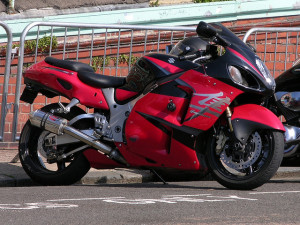Motorbikes and scooters are to be allowed in the new Lewes Road bus lane as a year-long trial from December next year.
 A report on the two existing trials along the A23 and A259 recommends permanently allowing motorbikes to use these routes as well as starting a trial along the Lewes Road north of Vogue Gyratory.
A report on the two existing trials along the A23 and A259 recommends permanently allowing motorbikes to use these routes as well as starting a trial along the Lewes Road north of Vogue Gyratory.
And it says data collected from these will be used to decide whether to allow motorbikes to use all the city’s bus lanes.
The report states: “Powered two-wheelers (PTWs) remain a small proportion of Brighton & Hove’s total daily traffic, yet road
casualties are high considering the number of road users.
“To date this PTWs in bus lanes trial has not produced conclusive evidence that road safety will be made any worse by such schemes on the city’s busy arterial routes.
“A period of further monitoring of the permanent scheme on the A23 from November 2014 and a further trial on the A270 in 2015/16 will ensure that the council has the necessary evidence to make a final decision on a wider scheme which would see outer ring arterial routes with bus lanes including PTW, while retaining a restriction on shared use in the central city.”
Brighton and Hove City Council’s transport committee has been asked to approve the three new traffic orders when it meets on Tuesday, 7 September.
They will allow motorbikes and scooters to use:
- The A259 from the city boundary at Saltdean to the Ovingdean roundabout
- The A23 from Carden Avenue to Preston Drove with measures added to deal with road safety concerns identified at the Peacock Lane junction
- The A270 Lewes Road from north of the Vogue Gyratory to the city boundary at Stony Mere Way as part of a new trial.
The report reveals that the number of accidents on the A259 bus lane fell slightly during the trial, with just one accident in the bus lane itself between a bicycle and a car.
However, the number of accidents involving motorbikes on the A23 doubled from the annual average, with half (three) happening at or near the junction with Peacock Lane.
The council’s road safety engineer’s investigation suggest this maybe because the junction is partially concealed by two large trees and a bend in the road.
In all three Peacock Lane crashes, a car travelling south in the general traffic lane turned across the path of a rider in the bus or cycle lane.
The engineer has therefore recommended putting installing ‘loop’ which will activate a warning sign when it detects oncoming vehicles in the bus lane.
The number of motorbikes using the A23 has risen very slightly from 0.63% of traffic to 0.75%, but on the A259 it has increased from 2.8% to 6.4%.
The trial did not alter the numbers of pedal cyclists using the bus lanes.









